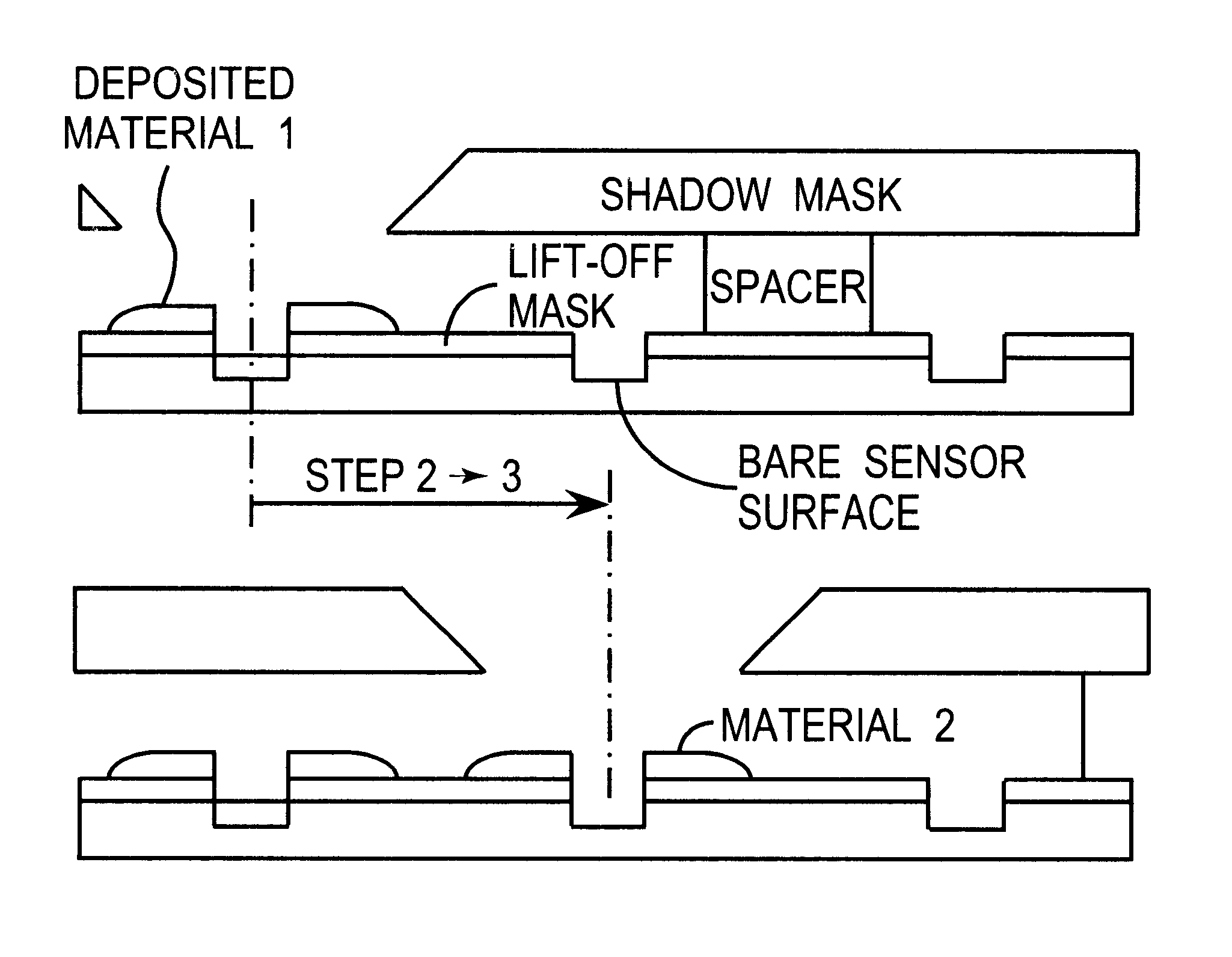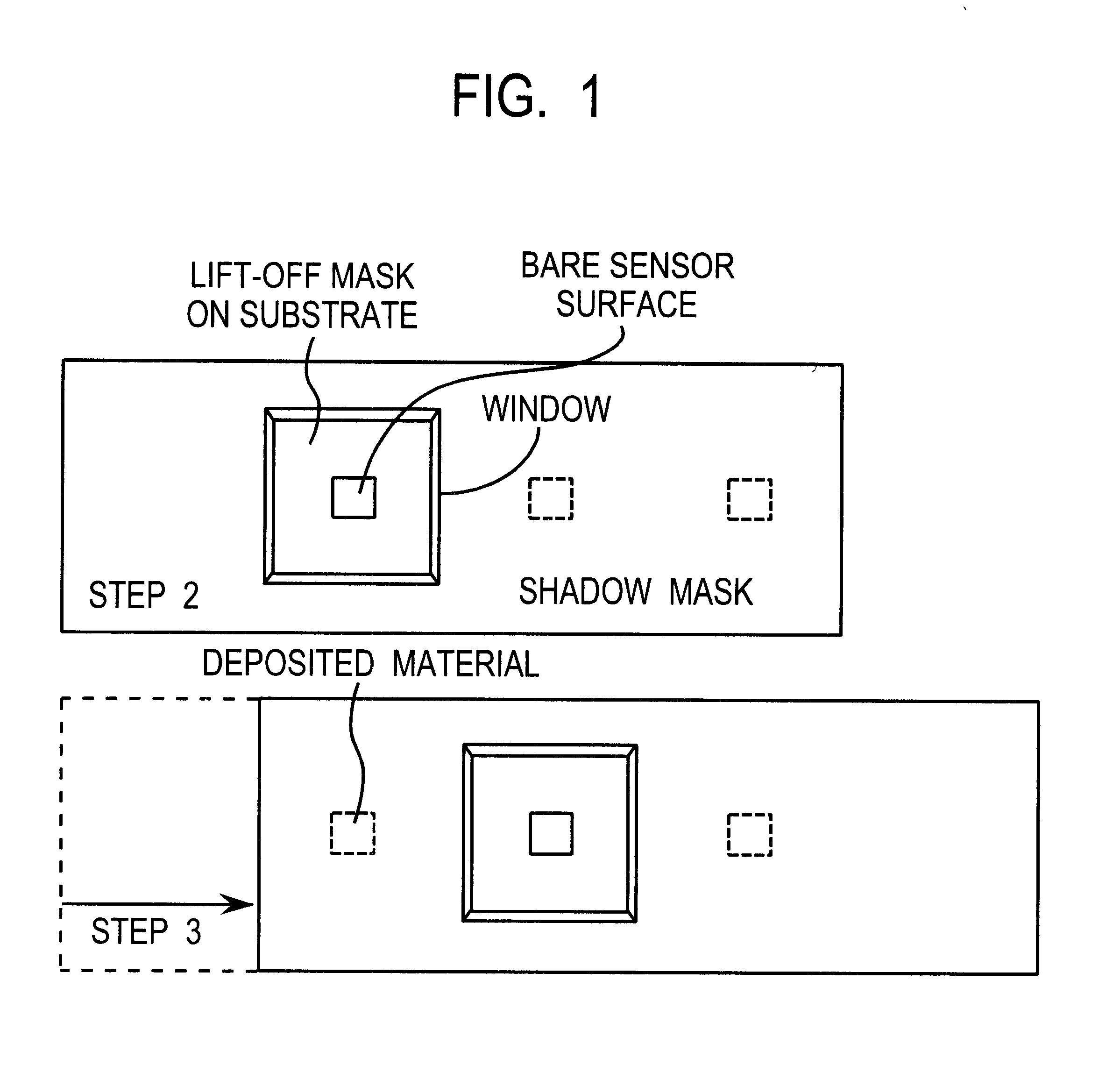Manufacturing method for integrated sensor arrays
a manufacturing method and sensor array technology, applied in the direction of instruments, electrical equipment, material analysis, etc., can solve the problems of contaminated top layers, contaminated top layers, and small amounts of resist in the to player electrode or its substrate, and seriously impair the sensor recognition ability
- Summary
- Abstract
- Description
- Claims
- Application Information
AI Technical Summary
Problems solved by technology
Method used
Image
Examples
Embodiment Construction
Step 1. The entire substrate wafer is subjected to the first part of a single lift-off procedure resulting in a resist layer with openings for all the top-layer sensor surfaces where the sensing layer material is to be deposited.
Step 2. The wafer is additionally covered by a shadow mask with only one mask window for each sensor of a first type in the array. The windows are larger than the resist openings and the windows are situated so that the mask can be placed with one window over each opening in the resist where deposition of a layer of a first type is intended (note that there can be more than one sensor of the same type in each array). The first material is deposited, e.g., by evaporation or sputtering in a vacuum chamber.
Step 3. The shadow mask is then moved so that its windows are located where a second type of sensor may be located in the array (see FIGS. 1 and 2). Then the next or second electrode material is deposited in and close to the openings in the resist.
Step 3 is r...
PUM
| Property | Measurement | Unit |
|---|---|---|
| areas | aaaaa | aaaaa |
| area | aaaaa | aaaaa |
| distance | aaaaa | aaaaa |
Abstract
Description
Claims
Application Information
 Login to View More
Login to View More - R&D
- Intellectual Property
- Life Sciences
- Materials
- Tech Scout
- Unparalleled Data Quality
- Higher Quality Content
- 60% Fewer Hallucinations
Browse by: Latest US Patents, China's latest patents, Technical Efficacy Thesaurus, Application Domain, Technology Topic, Popular Technical Reports.
© 2025 PatSnap. All rights reserved.Legal|Privacy policy|Modern Slavery Act Transparency Statement|Sitemap|About US| Contact US: help@patsnap.com



